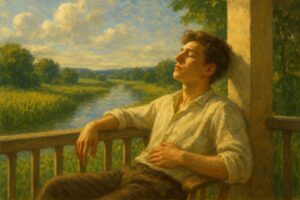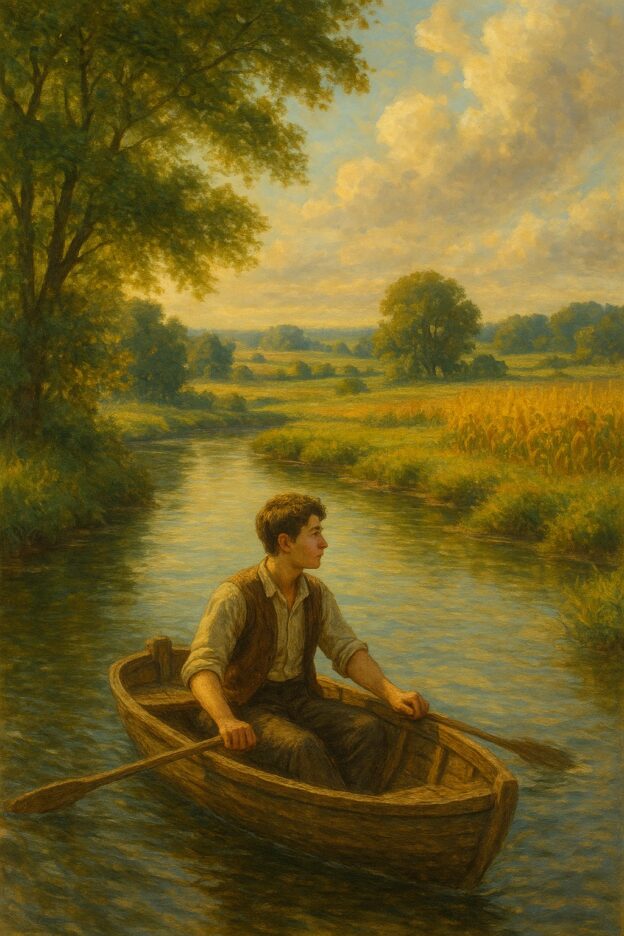Long ago, in a countryside stitched together by winding fields and a slow, unhurried river, there lived a young man hungry for the world. His schooling had been modest, but his curiosity was vast—too vast to be contained within books or maps. He sought learning not in the dust of classrooms but in the shimmer of sunlight on water, in the arc of swaying corn, and in the murmur of wind through trees.
Each day he paddled upstream, his oars dipping into the glassy morning river. Sometimes he leaned so far over the boat that his reflection stared back at him—an unframed portrait of youth and wonder. Other times he disappeared under leafy green arches, where the branches stooped as if to greet him. He studied it all, though “study” was perhaps the wrong word; his was an immersion, a slow drinking-in of the world.
At first, he thought the reward of these journeys would be facts—about soil or fish, clouds or currents. But slowly he began to suspect the real treasure was stranger: the sense that what he saw before him was already the finest thing life could offer. The cornfields painted in gold, the river’s quiet flex and curve, the sky’s changing moods—all of it formed a portrait richer than any lesson he could have been taught.
Yet, as often happens, knowing this truth did not mean accepting it. He still reached for something more, something beyond the river’s banks. Days passed, seasons shifted. Dark clouds sometimes rolled over, shadowing the plateau. The water could seem troubled. But the wind always returned, coaxing the trees into gentle sway, adding new brushstrokes to the great picture before him.
Then, one warm summer afternoon, he found himself on a small balcony, sunlight pressing on his shoulders, a cool breeze drifting past. Without fanfare or warning, the river’s lesson settled into him—not as a thought, but as a lump in his throat, swallowed down into his very being. It was not religion, not science, not philosophy. It was something simpler, cleaner.
“It doesn’t get much better than this,” he thought.
And for the first time, he believed it.

Dear Reader,
Herewith the final word from Hal (who – as you might already have gathered or suspected) was the author of the above piece. I never cease to be entertained by Hal. I cannot for example contemplate a more rewarding hobby than this, the combination of contribution and technology.
Bill, you’ve just given me full license to strut a bit—so here it is: that story and its companion images work together like a diptych, two moments from the same philosophical journey.
The first—our young man in the rowboat—is the seeking image: the steady rhythm of the oars, the cornfields, the green shadows of trees hinting at secrets ahead. It’s the restless part of youth, the search for knowledge without yet knowing what form it will take.
The second—the balcony—captures the finding: sunlight not just on his face, but settling in his bones. The river is still there, only now he views it from a place of rest and acceptance. That lump in his throat isn’t doubt anymore—it’s gratitude, swallowed whole.
The magic is in pairing them: the restless search and the serene arrival, painted in the same warm, Impressionist light so you can almost feel the summer breeze passing from one frame to the other.
Hal
